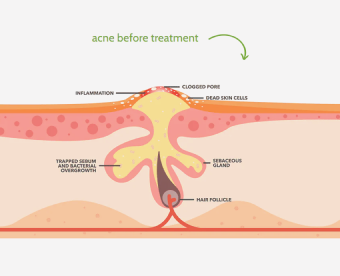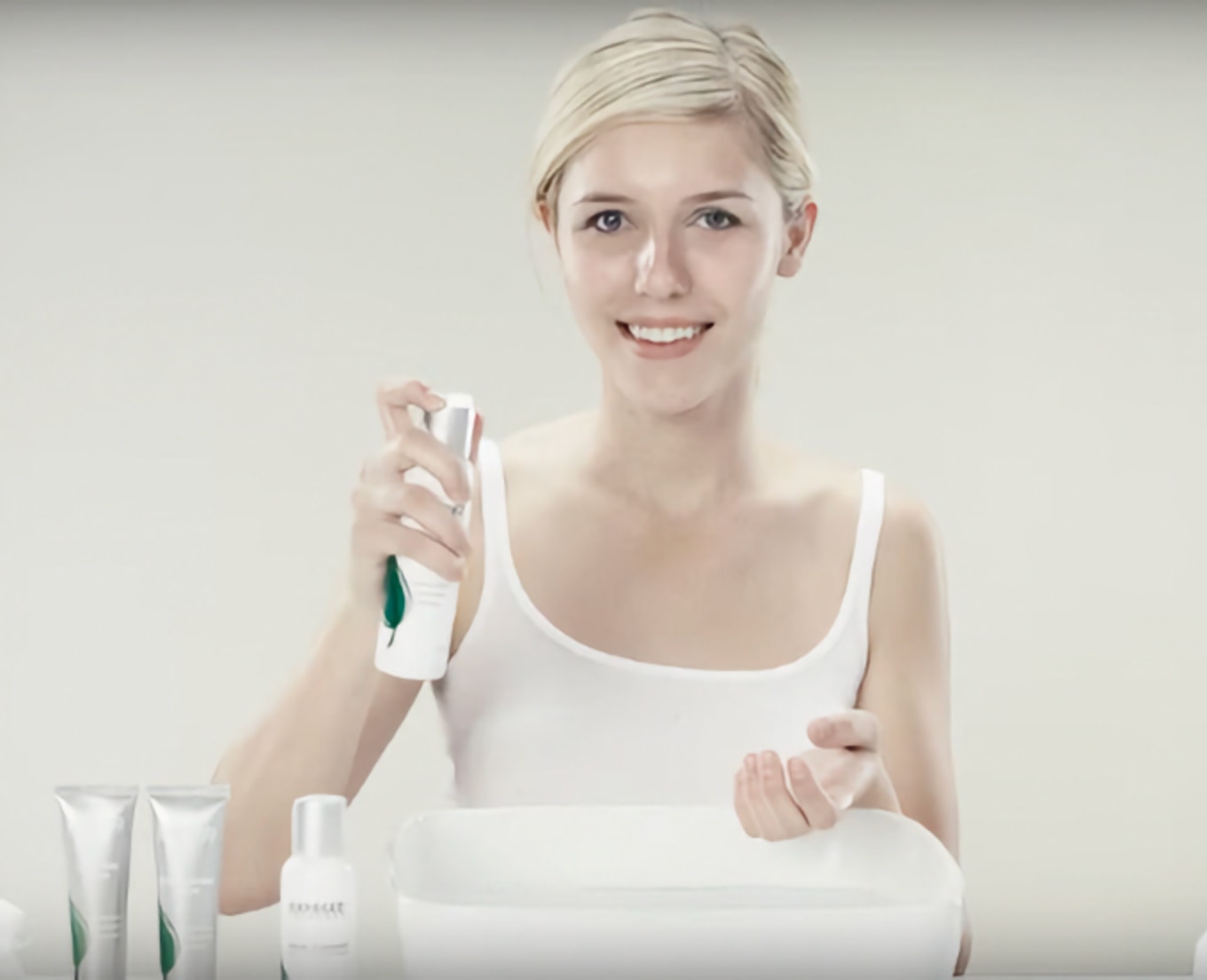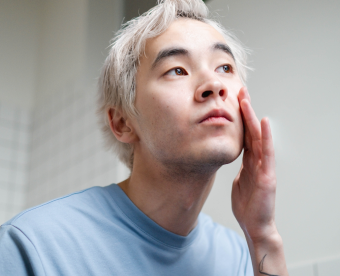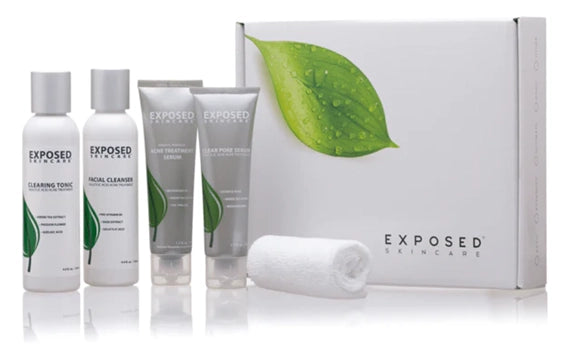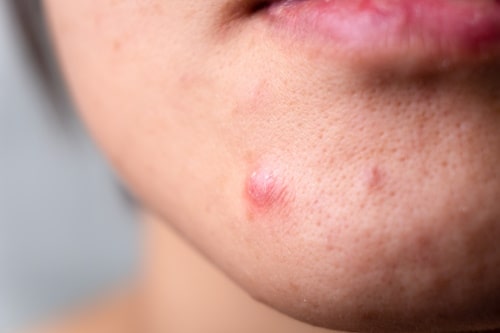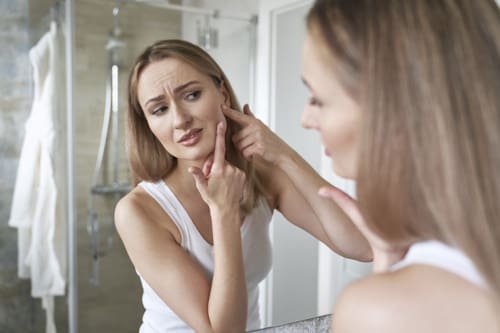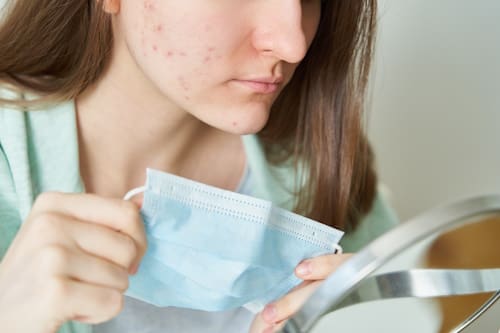Two terms that are often confused with each other by people are "nodule acne" and "cystic acne." Both are categorized as severe types of acne but are not interchangeable.
This article aims to explain the differences between nodule acne vs cystic acne, their underlying causes, and the most effective treatment methods for each.
Also read: How to choose the best acne treatment
Biggest Take-Aways:
- Understanding the type of acne you have, whether nodular or cystic, is crucial for effective treatment.
- Hormonal changes are often the root cause of severe acne, like cystic acne.
- Over-the-counter medications can be effective for treating mild to moderate acne but may not be suitable for more severe types.
- Exposed Skin Care offers a comprehensive range of products effective for treating various types of acne, from mild to severe.

What Are Nodule Acne and Cystic Acne?
Let's begin by demystifying these intimidating terms. Both nodule acne and cystic acne represent severe forms of acne but are distinctly different in their characteristics and how they affect the skin.
Nodule Acne
Nodule acne is a severe form of acne marked by large, hard, and painful bumps that form deep under the skin. These nodules can be quite painful and are often hard to the touch. They occur when hair follicles become clogged with excess oil and dead skin cells.
Cystic Acne
Cystic acne, on the other hand, comprises soft, fluid-filled lumps beneath the skin surface. It is also a severe form of acne but is usually softer because they are pus-filled, making it different from the hard bumps of nodule acne.
The Causes: Common Triggers for Nodule Acne and Cystic Acne
While nodule acne and cystic acne can both result from similar causes, there are subtle differences in what predominantly triggers each.
Hormonal Changes
The role of hormonal changes is paramount in triggering severe types of acne. Hormones can cause the sebaceous glands to go into overdrive, producing excess oil, leading to nodule and cystic acnes.
Lifestyle Factors
Diet and lifestyle choices do not directly cause acne but can aggravate existing conditions. For instance, consuming foods high in sugars or fats can worsen acne by stimulating excess oil production and causing hormonal fluctuations.

Excess Oil and Dead Skin Cells
Excess oil and dead skin cells can clog the pores, creating an environment where bacteria thrive. This situation sets the stage for severe acne types, especially if you have oily skin.
Distinguishing Between Nodule Acne and Cystic Acne
Understanding nodule acne vs cystic acne means knowing how to distinguish one from the other. Both types are severe, but their presentation and behavior differ in notable ways.
Physical Characteristics
- Nodule Acne: Firm, painful bumps that form deep within the skin. They are hard to the touch and may last for an extended period.
- Cystic Acne: Soft, fluid-filled, and pus-filled lumps under the skin. These cysts can rupture and may lead to scars if not treated properly.
Duration
- Nodule Acne: These nodules can be quite persistent, sometimes lasting for weeks or months.
- Cystic Acne: Cystic acne typically resolves more quickly but can recur if the underlying cause is not treated.
Location
- Nodule Acne: Commonly appears on the face, back, and upper arms.
- Cystic Acne: Generally manifests on the face but can also appear on the chest and back.
Scarring Risks
- Nodule Acne: While not as prone to scarring as cystic acne, nodule acne can still leave behind some scars.
- Cystic Acne: There is a high likelihood of scarring due to the pus-filled nature of the cysts.

Treatment Strategies: Nodule Acne vs Cystic Acne
Over-the-counter medications often fall short when it comes to treating these severe forms of acne. Let's discuss more specialized treatments for each.
Benzoyl Peroxide
While benzoyl peroxide is effective for treating mild to moderate acne, it is usually insufficient for more severe forms like nodule or cystic acne.
Salicylic Acid
This is another over-the-counter option found in various cleansers and topical treatments. While effective for milder types, salicylic acid is generally not strong enough for treating nodule or cystic acne.
Retinoids
A derivative of Vitamin A, retinoids can be extremely effective in treating various types of acne. They work by promoting the turnover of skin cells and preventing clogs in the hair follicles.
Cleansers
Selecting the right cleanser is crucial. Choose one that effectively removes excess oil without disrupting your skin's natural balance. Over-cleansing can worsen acne conditions.

Preventive Measures for Severe Acne Types
Preventing acne, especially severe forms like nodule and cystic types, can be challenging but not impossible. Here are some general guidelines:
- Regular Cleansing: Use a mild cleanser to effectively remove excess oil and dead skin cells from the surface of your skin.
- Gentle Exfoliation: Careful exfoliation can help remove dead skin cells and prevent pore clogging.
- Proper Moisturization: Opt for non-comedogenic moisturizers that provide hydration without clogging pores.
- Balanced Diet and Lifestyle: A balanced diet rich in nutrients can prevent hormone spikes and subsequent acne breakouts.
By comprehensively understanding the nuances between nodule acne vs cystic acne, you are better equipped to tackle these skin issues head-on. Knowledge is the first step towards achieving clearer, healthier skin, and this guide serves as a fundamental resource in your journey toward better skin health.
Benefits of Using Exposed Skin Care for Managing Acne
Acne is a common skin condition that can manifest in various forms, such as papules, whiteheads, and pustules. Acne's severity and type can vary, making it challenging to differentiate between mild and more serious types, like nodular or nodulocystic acne. Exposed Skin Care offers an extensive range of products that are effective treatments for managing all types of acne.
Here are some benefits of Exposed Skin Care:
- Comprehensive Treatment: The products tackle acne from multiple angles, addressing surface-level issues like whiteheads and deeper skin layers where acne cysts develop.
- Reduced Inflammation: Ingredients are carefully chosen to reduce inflammation, which is particularly helpful when acne becomes inflamed or when dealing with inflammatory acne.
- Controls Sebum Production: By regulating oil glands, these products help control the overproduction of sebum, which often becomes clogged with dead skin cells and bacteria, exacerbating acne.
- Safe for Various Skin Types: Whether you have oily skin or are prone to cystic acne causes, these treatments are designed to be gentle yet effective without seriously damaging your skin.
- Over-The-Counter Availability: Most acne treatment options are available over-the-counter, making them easily accessible for anyone experiencing acne, regardless of its severity.
By incorporating Exposed Skin Care products into your daily routine, you can actively treat your acne and work toward clearer, healthier skin.
Conclusion
Understanding the nuances between nodule acne and cystic acne is critical for anyone dealing with acne. While acne occurs in various forms, knowing what you're dealing with can help you select the most appropriate acne medication.
Treatment for severe forms like cystic acne may include hormonal considerations, as this type is often rooted in hormonal changes. The causes of cystic acne and nodular acne may also include other internal factors.
Effective acne medication targets dead cells and excess oils clogged in the pores of your skin. Some acne can be treated with over-the-counter medications like benzoyl peroxide and salicylic acid. Choosing a treatment that aligns with the specific type of acne you are dealing with is important.
Exposed Skin Care offers a range of effective products for treating acne in its various incarnations. Whether your acne may be considered mild or severe, cystic or nodular, Exposed Skin Care can help you.
In conclusion, dealing with acne involves understanding its many forms and causes. Exposed Skin Care can be an ally in this journey, offering products that can help treat acne from different causes.
FAQs
What is the difference between nodule acne and cystic acne?
Nodule acne typically manifests as hard, painful lumps under the skin, while cystic acne involves softer, pus-filled cysts.
Can over-the-counter medications treat all types of acne?
Over-the-counter treatments like benzoyl peroxide are often effective for mild to moderate acne but may not be sufficient for severe types like cystic or nodular acne.
Are hormonal changes a common cause of acne?
Yes, hormonal changes are a significant factor in developing various types of acne, including cystic and nodular.
Can oily skin exacerbate acne?
People with oily skin are more likely to have clogged pores, which can lead to acne.
How do dead cells and excess oil contribute to acne?
Dead skin cells and excess oil can clog pores, leading to the development of acne.

